From Frere Hall to Teen Talwar, Aurat March 2024 dances its way to change
Feminist Eid returned for 7th edition with aesthetics both powerful and promising
KARACHI:Aurat March Karachi returned this year to the city’s historic Frere Hall with an Ehtajaji Mela awash with yellow and orange. From the saree-clad organisers taking the stage to its backdrop, the Karachi chapter may not have announced a formal theme but many took their creative liberties with the designated palette.
Since it emerged in 2018, Aurat March like every other resistance platform has taken its due time to entertain criticism from within. Some blindspots remained a constant, others gave way to new ideas such as housing separate cohorts dedicated to each: minority rights, transgender rights and women’s economic rights. In a bid to facilitate deeper conversations, this spatial experiment had attendees ‘pick a camp’ before all three converged onto a single stage.
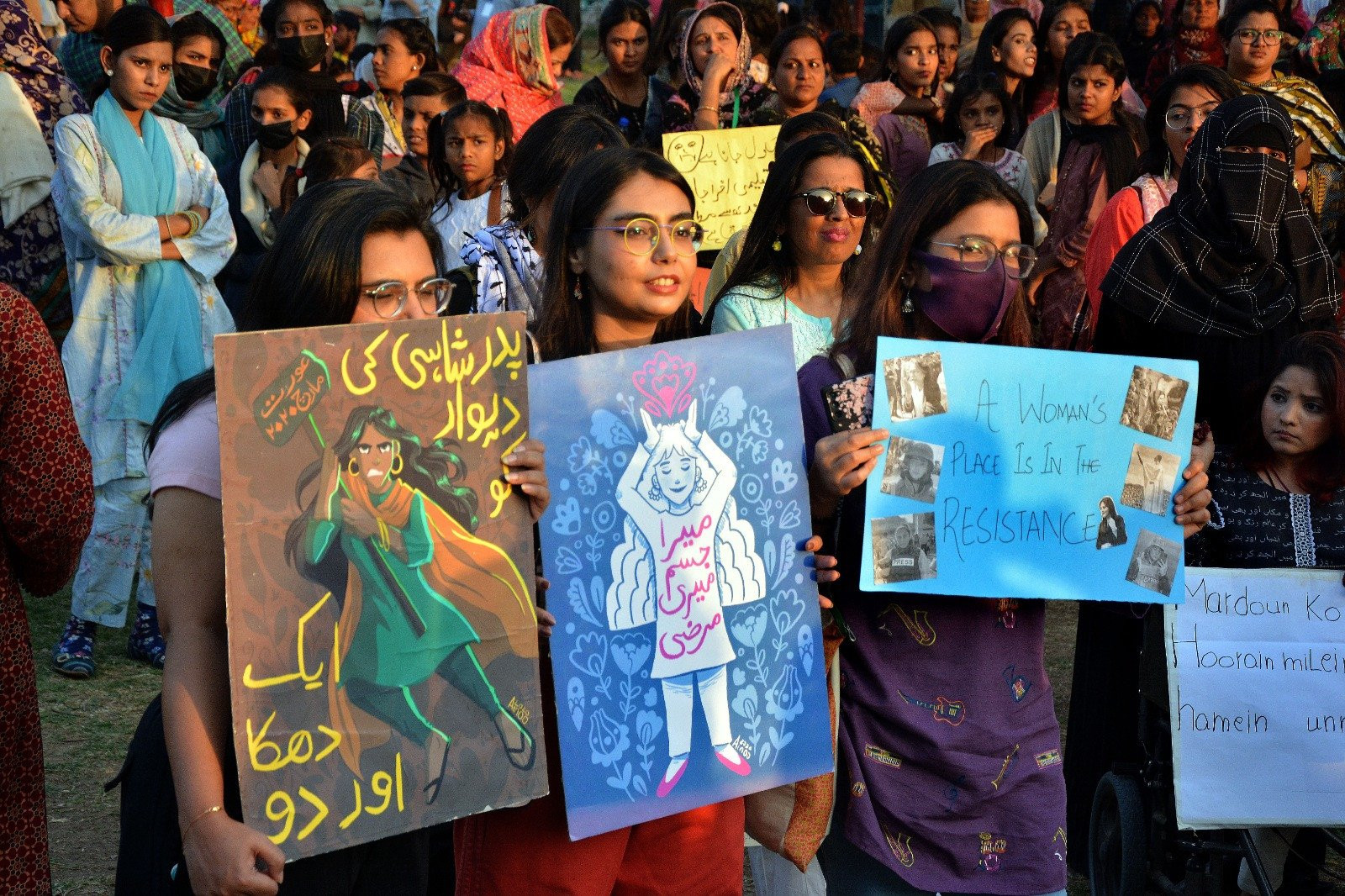
By its 7th edition, there is an acknowledgment of criticism as care as thousands return to a protest venue, armed with art, music and dance. Powerful images from Friday are aplenty for a nation where women and gender minorities joyously and defiantly reclaiming public spaces is a radical sight to behold.
From the art spawned under Zapatistas in the Mexican state of Chiapas to a renewed ambition to mainstream Palestinian creatives after Israel’s fresh wave of apartheid violence, way too much ink has been spilled on aesthetics as intrinsically a political project for bad-faith actors and genuinely curious passersby to ask: Will you dance your way to freedom?
‘Mera dil bechain hai barabari k liye’
Dance and sing, we shall. ‘Feminist Eid’ as many, including AM’s team, dub it is a juggernaut of its own cultural, political and spiritual making. Not everything feminists do is to counter trolls and those threatened by the very nature of this protest; that burden was long forgone. However, a feminist Eid is decidedly more culturally attuned than bloodthirsty mobs and their inability to tell scripture apart from alphabets.
Stalls of mehndi, the best of the city’s fashion game, women who laugh and yell without abandon - the feminist Eid is a utopia with a vexing counterpart in reality where women toil in kitchens all day long preparing feasts.
And then, there is the music. A witty spin on the iconic 1978 Bollywood song Salame Ishq Meri Jaan became a political anthem; its rendition was angry, out of tune, discordant, and for those with an ear for melody, even jarring at times. Amid its many striking alterations, the original verse “mera dil bechain hai humsafar ke liye” (my heart is restless for a companion) found a new life in “mera dil bechain hai barabari ke liye” (my heart is restless for equality).
Sheema Kirmani commanded the stage, Bindiya Rana joined, reminiscent of those spontaneous antakshari jams that once animated many Eid evenings.
‘Mera haq kidhar hai’
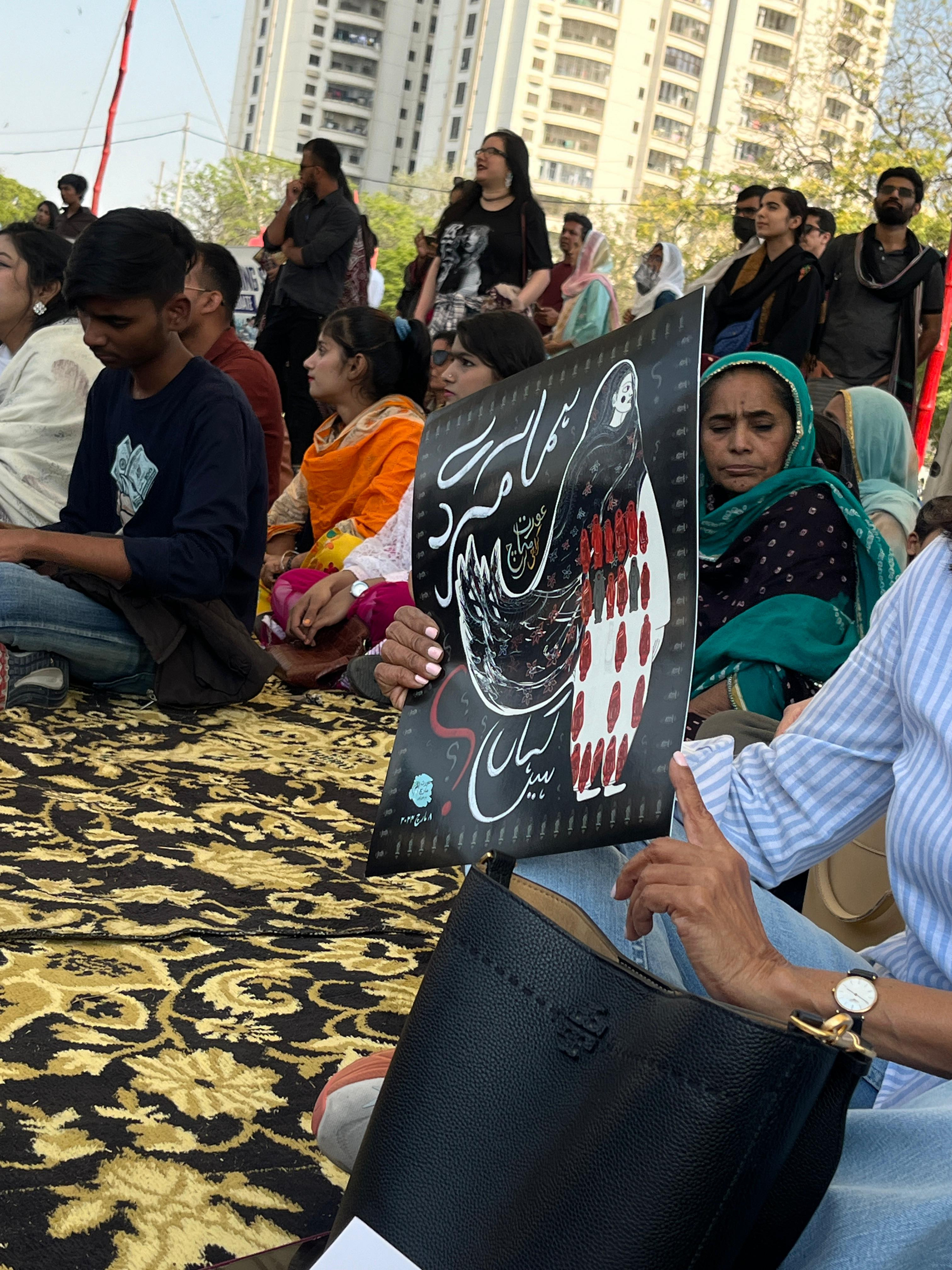
Eva B’s latest is an easy taking and could have become a more recurring sound this year. It featured twice at most and the organisers on stage chimed in. It’s catchy and bold and definitely a much better fit for a rights-based protest - no offence to Peechay Hutt (but that is just so 2022). In terms of aesthetics, it is not egregious to say that Aurat March Karachi fell short of curating the perfect sonic scene when it has a local treasure trove to depend on.
The right song can turn onlookers into a congression and this is true for both protests and concerts. Especially with such a festive focus, an intermittent play from a staple instrumental EDM compilation felt amiss and more to pass the time between fierce speeches. The result was a fluctuating energy that could have easily been routed towards a crescendo with the right anthems and music. Or perhaps, these are the mere musings of a music critic.
‘O lal meri’
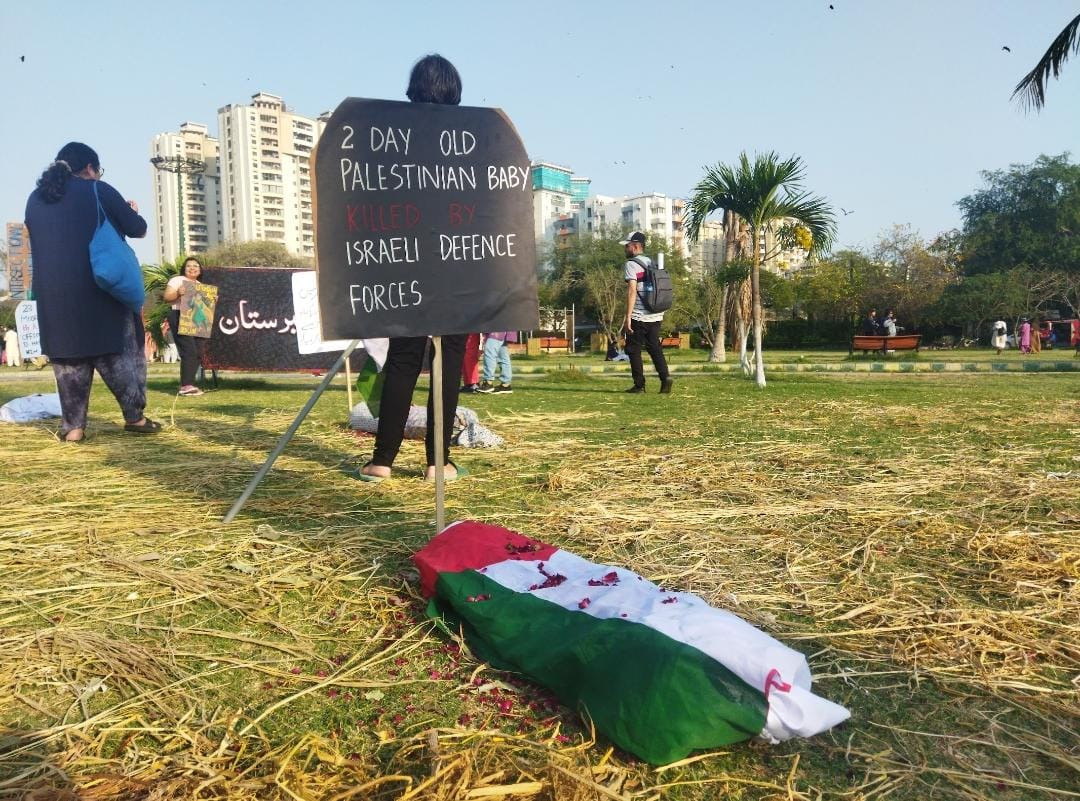
Dhamaal is a spiritual ode, a political statement, a divine embodiment, a reclamation of space and culture. Even if its staging outside its typical house, a saint’s shrine, at a protest site denies the highest surrender possible, losing yourself to a dhamaal with a call to Lal Shahbaz Qalandar is also a reminder to transgress: identities, borders and boundaries.
While the stage beckoned everyone to welcome the spirit of dhamaal, a swarm of posters and placards took up the case of countless Palestinians subjected to the brutalising apartheid regime of Israel. At a little walk from the stage was “pidarshahi ka qabristan,” (translation: the graveyard of patriarchy). Body bags tagged with placards told the victims’ ordeals: a 2-day-old Palestinian baby killed by the Israeli Defence Forces, a 30-year-old woman killed by her partner for breaking up with him.
From Gaza to Karachi to Sehwan, Frere Hall was able to house many cities, many injustices and many solidarities.
‘Sarfaroshi ki tamanna’
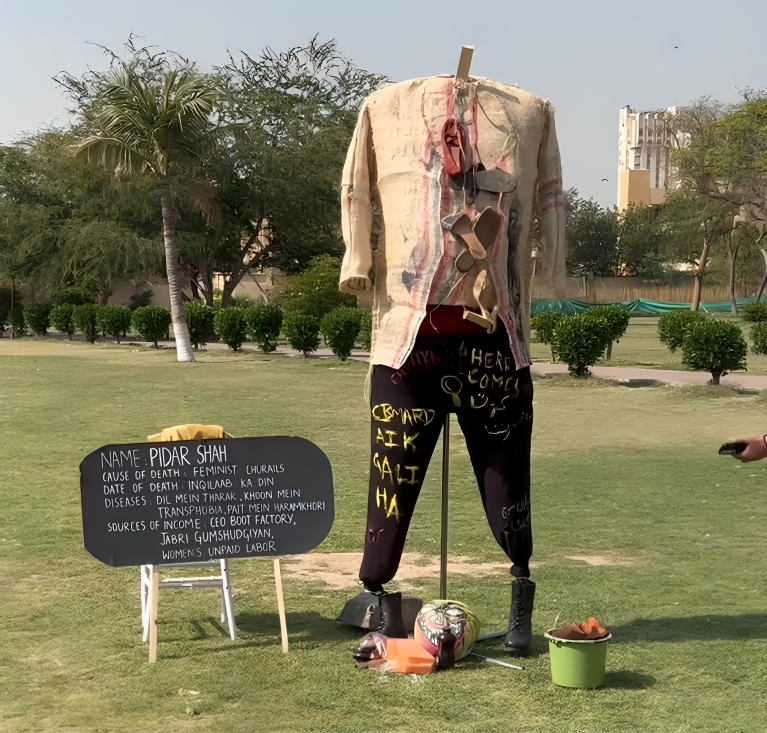
Bismil Azimabadi’s call for rebellion made its annual appearance at Aurat March and the crowd erupted into wild cheers. The day’s culmination was a march from Frere Hall to Teen Talwar, where the headless ragged mannequin symbolising the “Pidar Shah” (cause of death: ‘feminist churails’) was set aflame.
Leaving Frere Hall, bags fastened, readying yourself for the last step - the actual march was filled with many reality checks. One parting glance revealed used paper plates and plastic bottles littered across the lawns while a woman tried to gather them all in a bag - likely to sell later - paying no heed to loud feminist refrains populating the air.
This and the five gaping potholes, swinging exposed wires and pedestrians shuffled into a thin, uneven strip of sidewalk on an expansive road covered to brim with vehicles was just as much the aesthetic of Aurat March as was the stage and the panaflex we left behind.
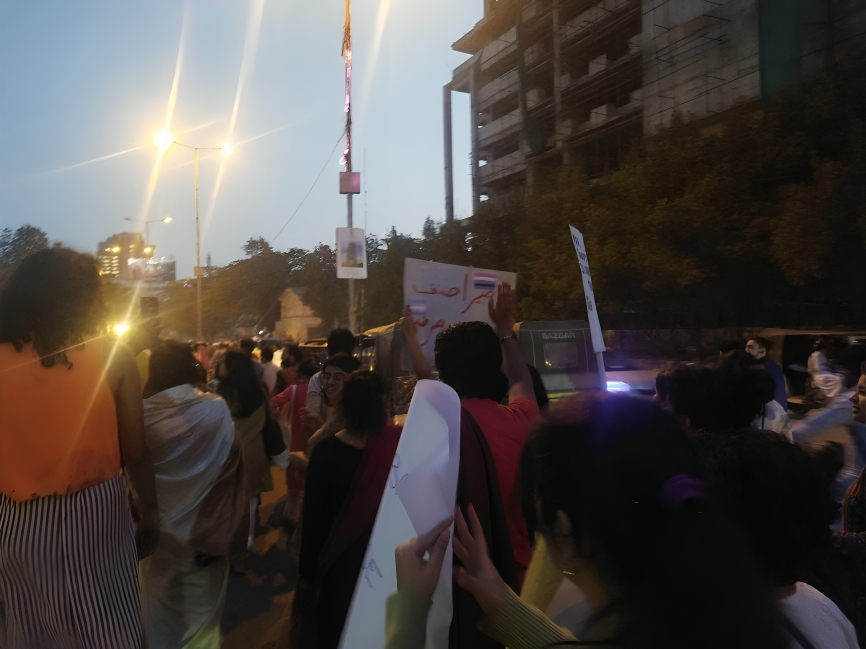
The children who had been jumping back and forth around me, the ones who laughingly pointed out the lipstick imprint on my cheek, courtesy of a friend, did not join us. Cars heaved grey, sooty clouds of smoke amid aggressive horns. Anyone with a double case of migraines and respiratory illnesses would be tempted to call that ruckus deliberate.
Many motorcycles parted the protesters, leaving the latter to find the march’s head and figure out what slogan everyone was yelling now. Many eyes and cameras fixated on some men and women smoking, stubbing out their cigarettes on the same dilapidated roads. Powerful images, yes, even if any regard for public hygiene, disability justice and environmental awareness had to be abandoned.
‘Rasta choriye ab camera men aa gaye’
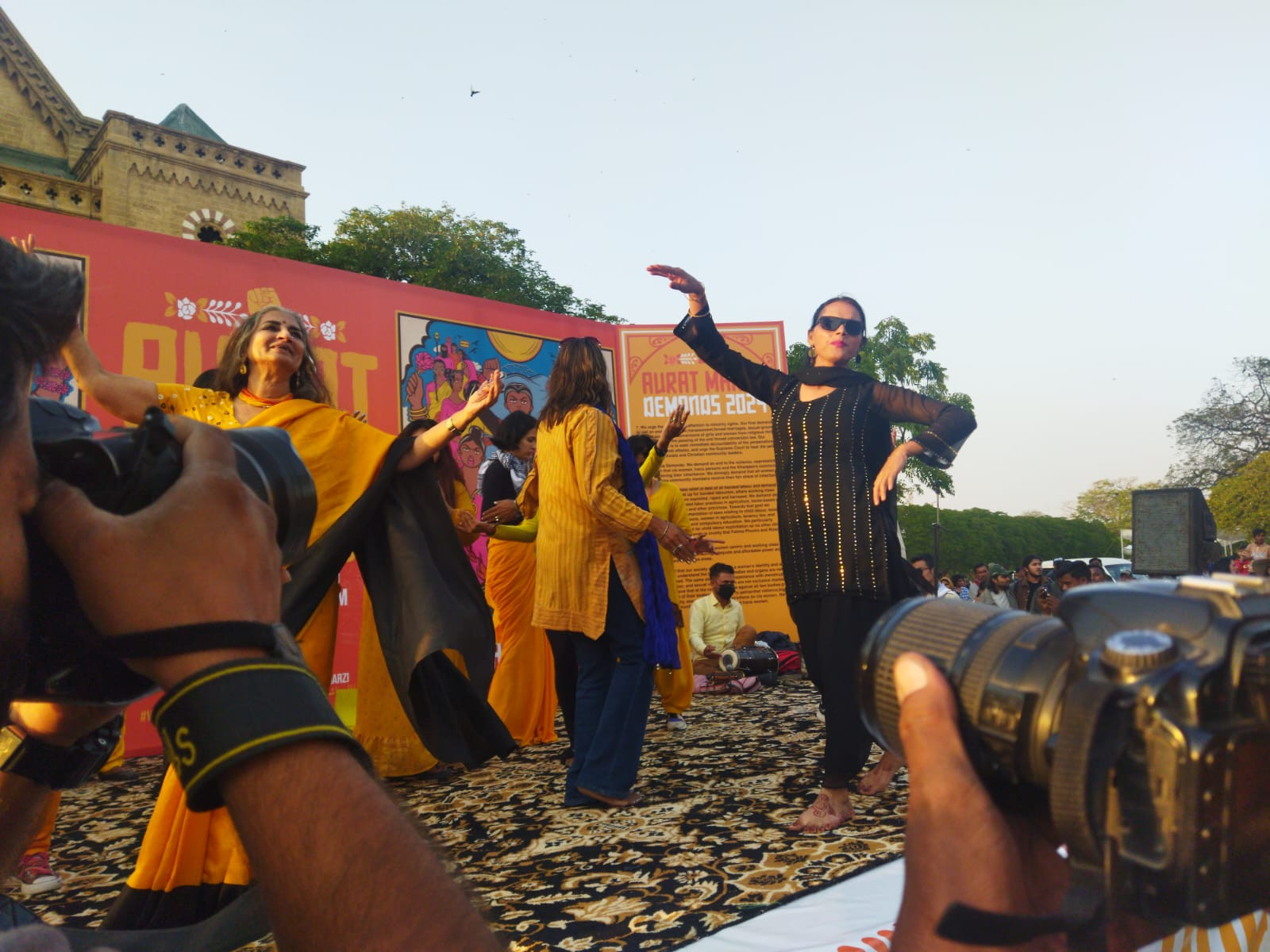
The night’s most powerful image was easily the “Pidar Shah” catching flames. Justin Bibis’ “rasta choriye ab ham aa gaye / garbar kiye bina yun gaa gaye” hit the scene around the same time but alas, I was knocked down by a full sentinel of cameramen who had captured the front line.
I paused my protest to catch some disgruntled gestures to “remove myself from their line of sight.” I think I may have yelled at one point, “aaj tau peeche hutt jao” but in the moment, camera clicks for an audience on the other end of a screen were more important than all the people out on the roads.
Have something to add to the story? Share it in the comments below.

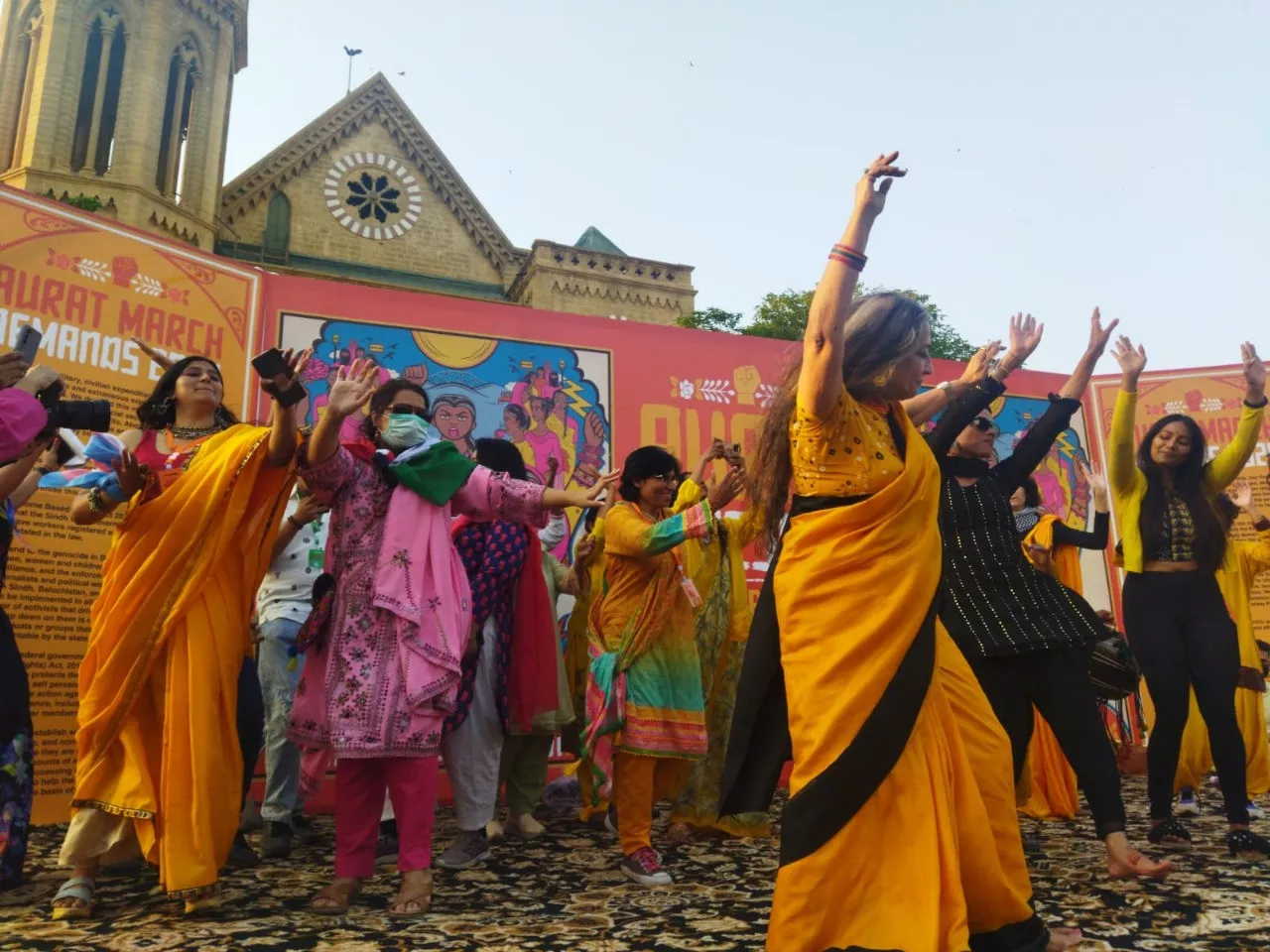
COMMENTS
Comments are moderated and generally will be posted if they are on-topic and not abusive.
For more information, please see our Comments FAQ